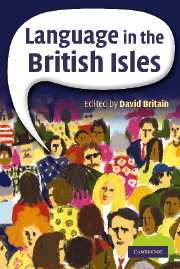Book contents
- Frontmatter
- Contents
- List of figures
- List of tables
- List of contributors
- Acknowledgements
- Map of the British Isles
- Introduction
- Part I English
- Part II The Celtic Languages
- Part III The Other Languages of the British Isles
- Part IV Applied Sociolinguistic Issues
- 23 Language policy and planning
- 24 Non-standard English and education
- 25 Education and speakers of languages other than English
- References
- Index
24 - Non-standard English and education
Published online by Cambridge University Press: 16 January 2010
- Frontmatter
- Contents
- List of figures
- List of tables
- List of contributors
- Acknowledgements
- Map of the British Isles
- Introduction
- Part I English
- Part II The Celtic Languages
- Part III The Other Languages of the British Isles
- Part IV Applied Sociolinguistic Issues
- 23 Language policy and planning
- 24 Non-standard English and education
- 25 Education and speakers of languages other than English
- References
- Index
Summary
Introduction
The twenty years since the first edition of Language in the British Isles have seen far-reaching changes in many spheres of life in Britain. One of the most fundamental has been the introduction, for the first time in Britain, of a National Curriculum to be followed by all children in state schools. The motivation for the initiative has been attributed variously to the need to improve educational standards, to promote equality of opportunity, to impose cultural unity on an increasingly diverse nation or to attempt to return to the values and traditions of the past (see Cameron & Bourne 1988 for full discussion). The core subject of the new curriculum as conceived by the Conservative government of the time, was to be the English language, and in particular Standard English.
Standard English (SE) is a social dialect, generally defined as ‘a set of grammatical and lexical forms typically used in speech and writing by educated native speakers’ (Trudgill 1984b:32). While there are no linguistic grounds for maintaining that it is superior to other dialects of English (Trudgill passim), it is nevertheless the ‘prestige’ variety, widely used in education, in the media and in almost all forms of writing (although in recent years Scottish and Caribbean writers have started to publish works in non-standard vernaculars). In spite of its high status, research suggests that Standard English is the home dialect of approximately 15% of the population of the UK (Trudgill 1999b).
- Type
- Chapter
- Information
- Language in the British Isles , pp. 401 - 416Publisher: Cambridge University PressPrint publication year: 2007
- 6
- Cited by

